What codes are available on matlab-fem.com?
-
1D Spring elements finite element MATLAB code
This MATLAB code is for one-dimensional spring elements with one degree of freedom per node parallel to spring axis. This code plots the initial configuration and deformed configuration as well as the relative displacement of each element on them. Results are verified with examples of textbook; arbitrary input geometry, nodal loads, and material properties for each element can be defined by user.

-
1D Beam elements finite element MATLAB code
This MATLAB code is for one-dimensional beam elements with two degrees of freedom per node (one translational -perpendicular to beam axis- and one rotational). Results are verified with examples of textbook ; arbitrary input geometry, nodal loads, and material properties for each element can be defined by user.
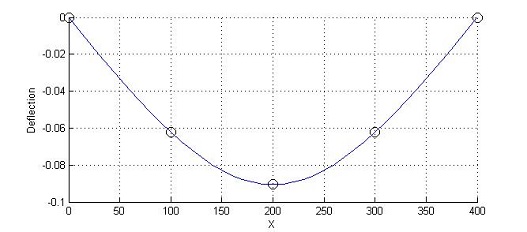
-
2D Truss elements finite element MATLAB code
This MATLAB code is for two-dimensional truss elements (plane truss structures). This code plots the initial configuration and deformed configuration of the structure as well as the forces on each element. Results are verified with examples of textbook; arbitrary input geometry, nodal loads, and material properties for each element can be defined by user.
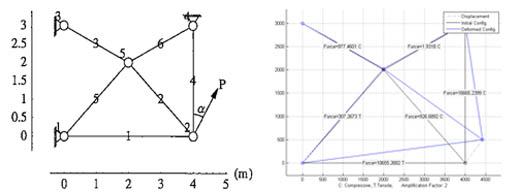
-
2D Beam elements finite element MATLAB code
This MATLAB code is for two-dimensional beam elements (plane beam structures) with three degrees of freedom per node (two translational -parallel and perpendicular to beam axis- and one rotational); This code plots the initial configuration and deformed configuration of the structure. Results are verified with examples of textbook; arbitrary input geometry, nodal loads, and material properties for each element can be defined by user.
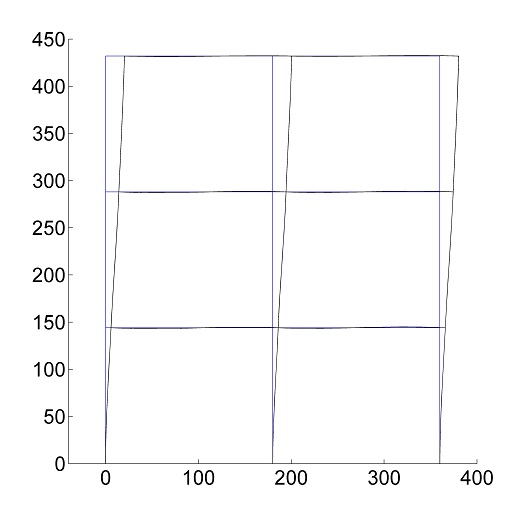
-
2D Solid elements finite element MATLAB code
This MATLAB code is for two-dimensional elastic solid elements; 3-noded, 4-noded, 6-noded and 8-noded elements are included. This code plots deformed configuration with stress field as contours on it for each increment so that you can have animated deformation. Results are verified with Abaqus results; arbitrary input geometry, nodal loads, and material properties for each element can be defined by user.
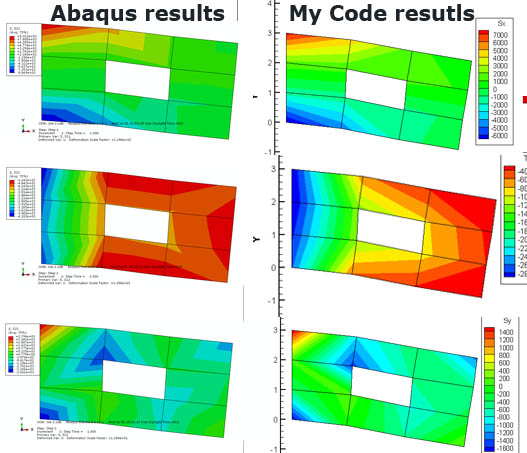
-
2D Penalty and Lagrange Multiplier Contact finite element MATLAB code
This MATLAB code is for two-dimensional elastic solid elements with contact algorithms implemented in it. Penalty method and Lagrange multipliers contact algorithms are implemented. This code is also using large deformation formulations. Results can be animated.; arbitrary input geometry, nodal loads, and material properties for each element can be defined by user.
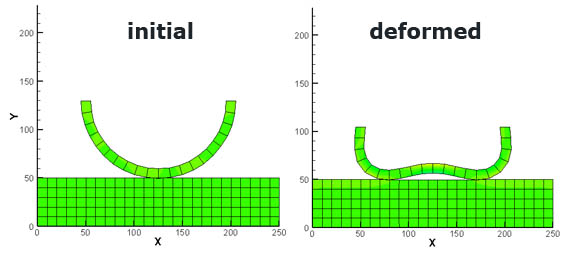
-
2D Large deformations finite element MATLAB code
This MATLAB code is for two-dimensional elastic solid elements with large deformations (Geometric nonlinearity). Both Updated Lagrangian Method and Total Lagrangian Method are available. I have used Newton-Raphson solver. Green-Lagrange strains are used in these codes. The results can be animated.; arbitrary input geometry, nodal loads, and material properties for each element can be defined by user.
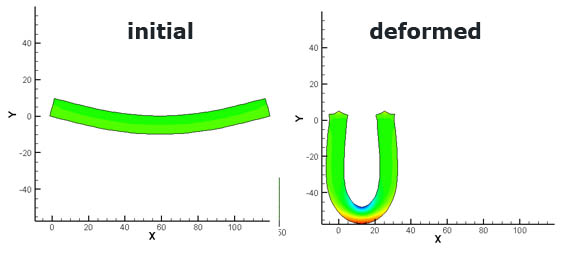
-
2D XFEM for Crack eXtended finite element MATLAB code
Mohr-Coulomb plasticity tangential stick-slip rule, penalty method, and Elastic predictor-Plastic corrector algorithm were used. Results are verified with Fushen Liu and Ronaldo I. Borja, “A contact algorithm for frictional crack propagation with the extended finite element method”, INTERNATIONAL JOURNAL FOR NUMERICAL METHODS IN ENGINEERING; arbitrary input geometry, nodal loads, and material properties for each element can be defined by user.
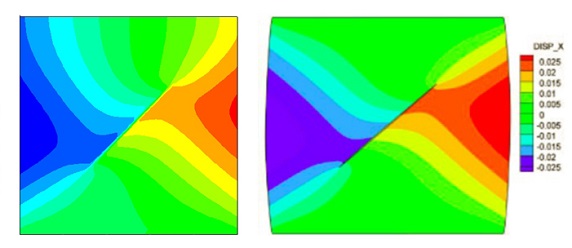
-
3D Truss elements finite element MATLAB code
This MATLAB code is for three-dimensional truss elements (space truss structures). This code plots the initial configuration and deformed configuration of the structure as well as the forces on each element. Results are verified with examples of textbook; arbitrary input geometry, nodal loads, and material properties for each element can be defined by user.
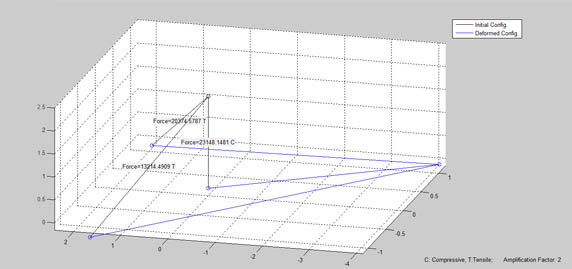
-
3D Solid elements finite element MATLAB code
This MATLAB code is for three-dimensional elastic 8-noded solid elements; This code plots deformed configuration with stress field as contours on it for each increment so that you can have animated deformation. Results are verified with Abaqus results; arbitrary input geometry, nodal loads, and material properties for each element can be defined by user.
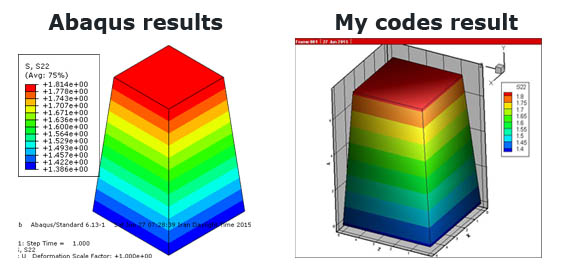
- 3D Large deformations finite element MATLAB code
What is Finite Element Method?
The finite element method (FEM) is a numerical method for solving problems of engineering and mathematical physics. It is also referred to as finite element analysis (FEA). Typical problem areas of interest include structural analysis, heat transfer, fluid flow, mass transport, and electromagnetic potential. The analytical solution of these problems generally require the solution to boundary value problems for partial differential equations. Read more about Finite Element MethodsWhat is MATLAB?
MATLAB (matrix laboratory) is a multi-paradigm numerical computing environment. A proprietary programming language developed by MathWorks, MATLAB allows matrix manipulations, plotting of functions and data, implementation of algorithms, creation of user interfaces, and interfacing with programs written in other languages, including C, C++, C#, Java, Fortran and Python.What reference books did I use for my codes?
Some of the main textbooks I used for codes are:General concepts and basic codes:
- Finite Element Procedures by K.J. Bathe
- The Finite Element Method (v.1 & v.2 & v.3) by Zienkiewicz & Taylor
- Fundamental finite element analysis and applications by M. Asghar Bhatti
- Computational Contact Mechanics by Peter Wriggers
- Finite Elements in Plasticity by D. R. J. Owen, E. Hinton
- Non-Linear Finite Element Analysis of Solids and Structures (vol. 1 & 2) by M. A. Crisfield
